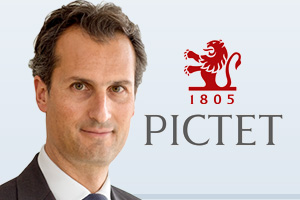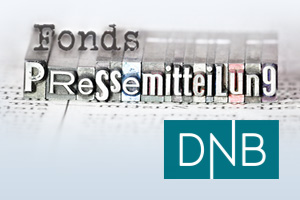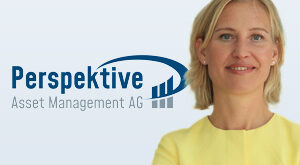
SJB | Korschenbroich, 05.09.2022.
Im Juli herrschte eine deutlich verbesserte Stimmung an den globalen Aktienmärkten vor, was sich auch in den Sektoren der Erneuerbaren Energien und der Umwelttechnologie bemerkbar machte. In diesem positiven Marktumfeld generierte der Pictet – Global Environmental Opportunities P EUR (WKN A1C3LN, ISIN LU0503631805) eine starke Wertentwicklung von +15,78 Prozent auf Monatsbasis und liegt über ein Jahr mit -0,39 Prozent nur hauchdünn im Minus. Der aktuelle Monatsbericht von Pictet-FondsManager Luciano Diana analysiert für alle Investoren der FondsStrategie SJB Nachhaltig die Veränderungen im Portfolio und liefert einen Ausblick für die Aktienmärkte des Environmental-Sektors.
Market Review
Risk assets saw a strong rebound in July, after their heavy losses at the start of the year, as investors reappraised how committed central banks will remain to tightening policy in the face of economic weakness. Global equities gained 7.1% on the month in local currency terms, leaving them down just under 12% for 2022 so far. US equities were the standout performers here, with the market picking up 9.3% on the month, followed by a 7.3% jump in eurozone stocks, with other major markets largely ranging around 4%. Within sectors, energy stocks managed to post solid gains despite a 4% drop in oil prices on the month. The big winners, however, were consumer discretionary and tech stocks, which had suffered some of the heftiest losses on the year so far. On the environmental front, in a rather dramatic turn of events, US Senator Joe Manchin agreed to insert major clean energy and climate-related legislation into a proposed reconciliation bill (the Inflation Reduction Act), which would provide additional support to various clean energy sectors and put the US on a much closer path to achieving its CO2 reduction goals. Nevertheless, the bill that is being put forward still needs to pass the Senate and the Congress before it can end up on the President’s desk to be signed into law.
Performance analysis
The strategy outperformed the MSCI AC World Index during the month of July. Outperformance was rather broad based. Within Energy Efficiency, semiconductor stocks, such as On Semiconductor, ASML and Applied Materials performed well, together with building efficiency stocks, such as Schneider Electric and A.O. Smith, as well as industrial efficiency stocks, such as Eaton and Keyence, while Signify underperformed. Key drivers of performance were resilient earning results and a small recovery of valuation multiples. In Dematerialized Economy, positive contribution came from all portfolio holdings, in particular Cadence, Synopsys, Autodesk, Ansys and PTC, thanks to solid results coupled with a decline in treasury yields, giving some valuation support to the group. Within Pollution Control, environmental monitoring stocks such as Danaher, Thermo Fisher and Agilent contributed positively due to resilient demand and solid results across the group. Within Waste Management & Recycling, SIG Group outperformed following good results while Stora Enso underperformed. Within Renewable Energy, Solaredge contributed strongly due to a positive development in US climate policy as well as good results from one of its closest peers.
Portfolio activity – overweightings & underweightings
During the month, we increased our exposure to Dematerialized Economy and reduced our cash levels. Following encouraging quarterly results in terms of demand resilience and pricing power and a stabilization in interest rates, we added back to Cadence and Dassault Systemes and also added back to Autodesk and Ansys as the stocks remain heavily de-rated. Within Energy Efficiency, we added to Infineon and Johnson Controls due to attractive valuations and reduced our positions in Equinix and Keyence. Within Renewable Energy, we took some profits in SolarEdge. In Sustainable Agriculture and Forestry, we reduced our positions in Givaudan and Symrise on relative valuation grounds, we took profits in West Fraser following media speculation about a takeover bid, and we initiated a position in Weyerhauser, one of the world’s largest private owners of timberland, as the valuation of its forest assets is likely to be resilient in a rising rate environment.
Market outlook
The outlook for the environmental theme remains promising. While our portfolio holdings will not be completely insulated from inflationary pressures, they have sufficient pricing power to navigate well in an inflationary environment. The current dislocations in the energy markets put the spotlight on the pace and affordability of the energy transition, stimulating renewable energy investments as well as corporate investments in energy saving technologies. We expect a healthy demand for industrial efficiency solutions, provided that spiralling energy prices do not lead into a recessionary environment. We see a robust semiconductor demand cycle, driven by automotive electrification and industrial automation solutions. We see a steady demand for building automation technologies. We expect the electrification and the digitization of the economy to continue to gain momentum, supporting demand for digital product life cycle management (PLM), design and engineering software and industrial IoT. Within renewables, we prefer exposure to solar over wind as solar energy is less impacted by short-term logistics challenges, component shortages and raw material price increases. We see very robust end-market demand for environmental remediation and climate resilience in the US, bolstered by public infrastructure investments.
Portfolio strategy
Our strategy remains focused on investing in environmental solutions providers. We believe that exposure to environmental trends offers investors attractive risk-adjusted returns, regardless of the stage of the economic cycle. We favour solutions providers with wide economic moats, robust profitability, healthy balance sheets and business models that don’t rely on government subsidies. These companies are not only likely to weather a difficult economy, but also to perform well during the recovery phase. Our bottom-up investment process results in a concentrated global portfolio with a growth and quality bias. Long term, the trends of population growth and rising living standards are inescapable and so is the growing strain on natural resources. Awareness of environmental issues has grown tremendously in the last few years and is now deep-seated, top of mind for an entire generation of citizens, consumers and investors.
Pictet – Global Environmental Opportunities Management Team
Luciano Diana
Gabriel Micheli
Yi Du




